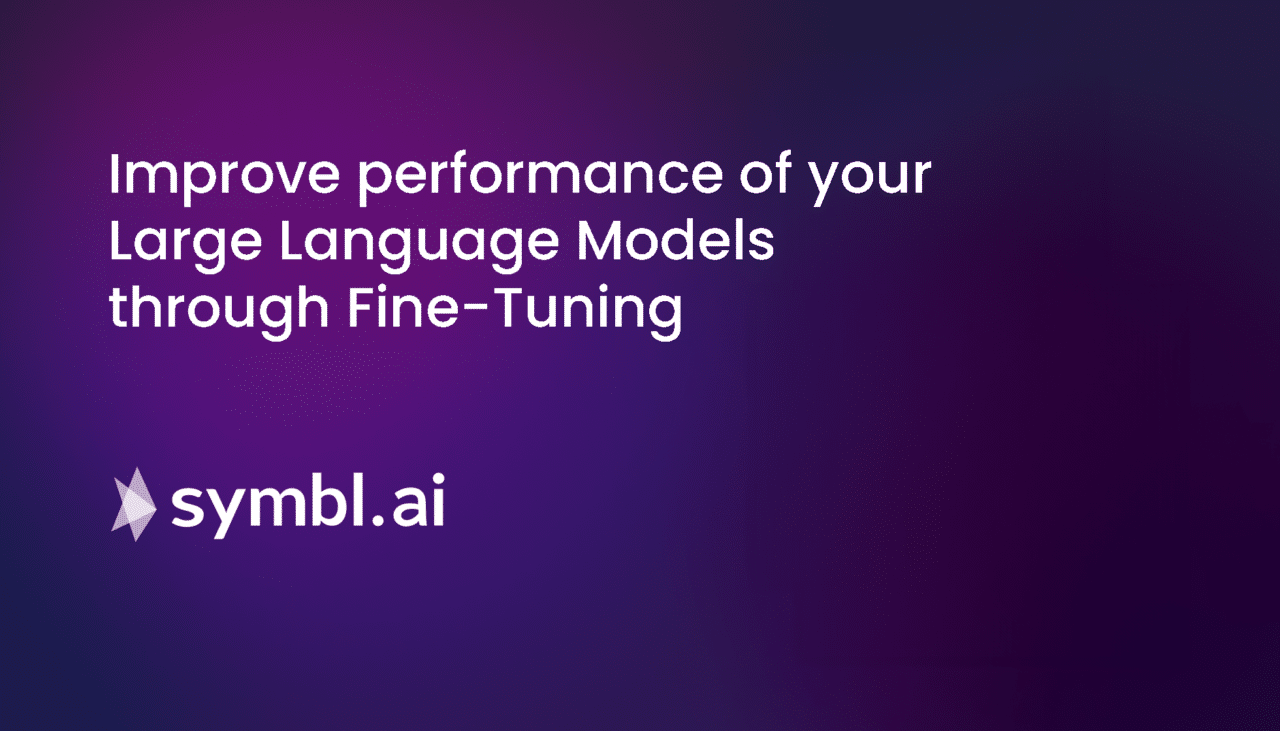In today’s ever changing landscape of Generative AI (GenAI), large language models (LLMs) have emerged critical for natural language processing, performing generative tasks, and much more. Businesses that develop GenAI applications – regardless of whether they are built on proprietary models, or open source LLMs – have begun to realize that general-purpose LLMs like the GPT family don’t always produce output that is specific enough to serve customers for their use cases. According to a recent survey by Predibase, most enterprise AI teams believe that LLMs need to be customized to achieve more accurate and tailored results. Among the respondents, nearly a third indicated ‘fine-tuning’ as the preferred approach to customize LLMs to make them more fit for purpose.
What is fine-tuning and why is it important?
Fine-tuning in large language models (LLMs) involves the re-training of pre-trained or foundational models on specific datasets, allowing the model to adapt to the specific context of the domain in question. This process can help increase the accuracy of language models and make it more tailored to specific business use cases. Adopting Large Language Models (LLMs) without fine-tuning leads to a set of challenges and limitations, especially when these models are applied to specific tasks or domains. Some of these include:
Limited domain-specific performance: Pre-trained LLMs have a general understanding of human language but without fine-tuning, they lack industry-specific knowledge such as jargon and processes that are specific to a business. This results in the model performing sub-optimally on domain-specific tasks, leading to lower accuracy and less relevant output in specific applications.
Lack of personalization: Generic LLMs struggle to provide personalized responses or recommendations, which is vital in applications such as personal assistants, chatbots, or recommender systems. Fine-tuning is a useful way to generate user-specific personalization.
Risk of undesired outputs: LLMs that are not fine-tuned may produce outputs that are biased and not reflective of the accepted norm. Fine-tuning allows greater control over model behavior to align with ethical and regulatory policies and guidelines.
Fine-tuning is a critical step for making these models truly effective, efficient, and relevant in real-world applications.
How do you fine-tune an LLM?
Fine-tuning an LLM can be carried out using different approaches, depending on (a) the specific use case; and (b) the availability of resources such as access to training data, compute hardware, and re-training time. The following table captures the common methods of fine-tuning and their benefits:
| Method | Description | Benefit |
| Transfer Learning | Involves reusing a pre-trained model’s weights and architecture for a new task or domain. | Utilizes the significant effort from the pretraining stage for new tasks |
| Sequential fine-tuning | Pre-trained model is fine-tuned on multiple related tasks or domains sequentially | Language nuances and patterns across different tasks are incorporated at each step for better performance |
| Task-specific fine-tuning | Adjusts a pre-trained model for a specific task, such as sentiment analysis or language translation | Requires more data and time than transfer learning but can result in higher performance on the specific task |
| Multi-task fine-tuning | Trains a single model to carry out several closely-related tasks at once | Tasks with similar characteristics can be grouped to enhance overall performance |
| Parameter efficient fine-tuning | Only a small number of model parameters are fine-tuned while freezing most parameters of the pretrained LLMs | Computation and time savings while maintaining performance |
How has Nebula been fine-tuned for conversational tasks
Through a robust pretraining and fine-tuning strategy, Symbl.ai’s Nebula LLM excels at understanding the nuances of human conversations and is optimized for conversation-centric generative tasks across different conversation types and channels. Nebula utilizes a two-step training and fine-tuning process: unsupervised learning on a very large text corpus in the pretraining phase, followed by supervised task-specific and multi-task fine-tuning on 50+ conversation tasks such as summarization, chain of thought reasoning, question & answers, sentiment analysis, note-taking, topic detection, action-item generation, entity extraction, intent detection, and sub-topic generation among others. The model is then continuously tuned with reinforcement learning from human feedback (RLHF) to improve the behavior and usefulness for users.
An important prerequisite for effective fine-tuning is the availability of training data that is representative of the target use case and contains sufficient examples to cover the required language patterns and concepts. This challenge is compounded in enterprise settings since conversational data is often confidential and hard to obtain. To solve this, the Nebula LLM has been fine-tuned on carefully curated proprietary datasets of over 100K+ business conversations across sales, and customer success.
Recognizing that enterprises have unique cases that require tailored fine-tuning strategies, we have designed Nebula to provide customers the flexibility to fine-tune using their own data that is most relevant to their use cases. To find out how, contact us.
Conclusion
Fine-tuning language models (LLM) is a powerful technique that helps pretrained models adapt to specific tasks. However, there are significant trade-offs and constraints that should be factored in before making a decision. For many scenarios, alternate techniques such as prompt engineering and retrieval augmented generation (RAG) should be considered due to lower implementation complexity and associated costs. However, from a long-term perspective, fine-tuning tends to be a reliable approach to obtain higher output accuracy and quality since the model’s fundamental weights and parameters are being changed.
If you would like to try out Nebula, sign up to get access to the Nebula Playground. We have launched the newest addition to our foundation model family – Nebula Embeddings API. Using Embeddings API, enterprises can convert their domain knowledge into vector embeddings to be used as context for Nebula’s generative capabilities. Learn more about Nebula Embeddings API.
